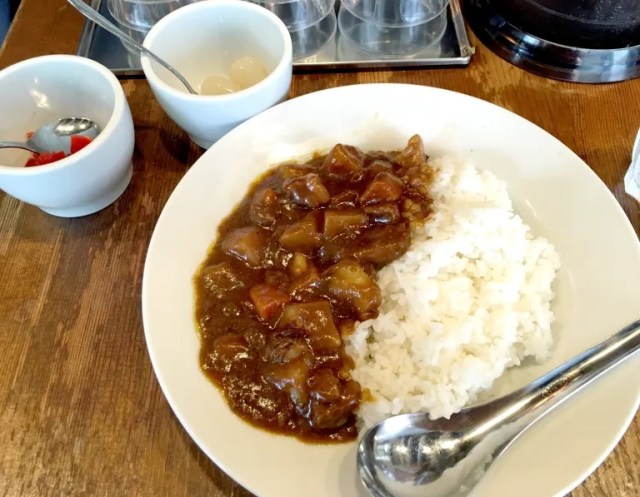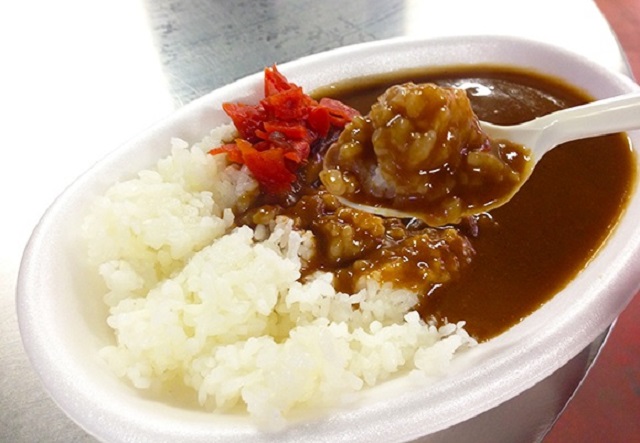
The roux and rice are almost always served separately, so what’s the best way to eat them?
There’s a lot of variety to curry rice in Japan. It can be spicy or mild, and toppings can include everything from healthy veggies to hearty slabs of deep-fried pork.
But for all its variations, there’s one thing that’s remarkably consistent about curry rice in Japan: it’s almost always served with all of the roux on only one half of the plate, and the rice on the other. There might be some overlap between the two sections, but you can be sure that just about every time you order curry rice in a restaurant, a wide section of the white rice is going to be uncovered.
This presentation raises the question, should you thoroughly mix all of the rice and roux together before you start eating, or should you leave them separate, taking individual bites of roux or rice, or maybe mixing no more than a single mouthful of the two at a time as you eat? To look for an answer, Japanese Internet portal Kurufa polled 500 of its users (339 men and 161 women), and also asked them why they choose to mix or not to mix.
When the votes were added up, the mixers made up the majority. Overall, two-thirds of the respondents said they don’t mix their roux and rice before they start eating, with 32.8 percent saying they do mix (shockingly, 3 survey participants, representing 0.6 percent of the pool, said they don’t eat curry rice at all). Mixing proved to be a little more popular among men than women, with 36.2 percent of male respondents choosing to mix versus just 26.3 percent of women.

When asked the reason for their mixing philosophy, non-mixers primarily pointed to the individual appeals of the roux’s spice and the rice’s starchy sweetness. By leaving the two unmixed, they can alternate between focusing on one of the other, and mixing small amount as they eat allows them to continually adjust the flavor balance to whatever they’re craving at that exact moment. Some also mentioned that they don’t like the way the rice and roux look when mixed together, especially how it leaves the portion of the plate that’s revealed as they eat looking streaked and messy.
However, the pro-mixing camp makes some good points as well. In contrast to the continually variable taste that comes from not mixing, mixing the rice and roux together helps coat every single grain of rice with roux, so that every bite really tastes like “curry rice,” not just curry or rice. Mixing also makes for a more satisfying conclusion to the meal, pro-mixers say, by eliminating the risk of running out of either rice or roux first. There’s no need to worry about evenly pacing yourself between eating the two ingredients if you pre-mix, ensuring that you’ll get both curry and rice in the final firing of your taste receptors.
It’s worth bearing in mind that while Japan has a lot of subtle etiquette rules, whether to mix curry roux and rice is a debate that falls outside the bounds of table manners, and either way is socially acceptable. You can even take a third option of starting off by eating them non-mixed, then stirring the rice and roux together half-way through your meal, allowing you to enjoy the best of both schools of thought.
Source: Kurufa via Yahoo! Japan News via Otakomu
Photos ©SoraNews24
● Want to hear about SoraNews24’s latest articles as soon as they’re published? Follow us on Facebook and Twitter!

No hay comentarios:
Publicar un comentario